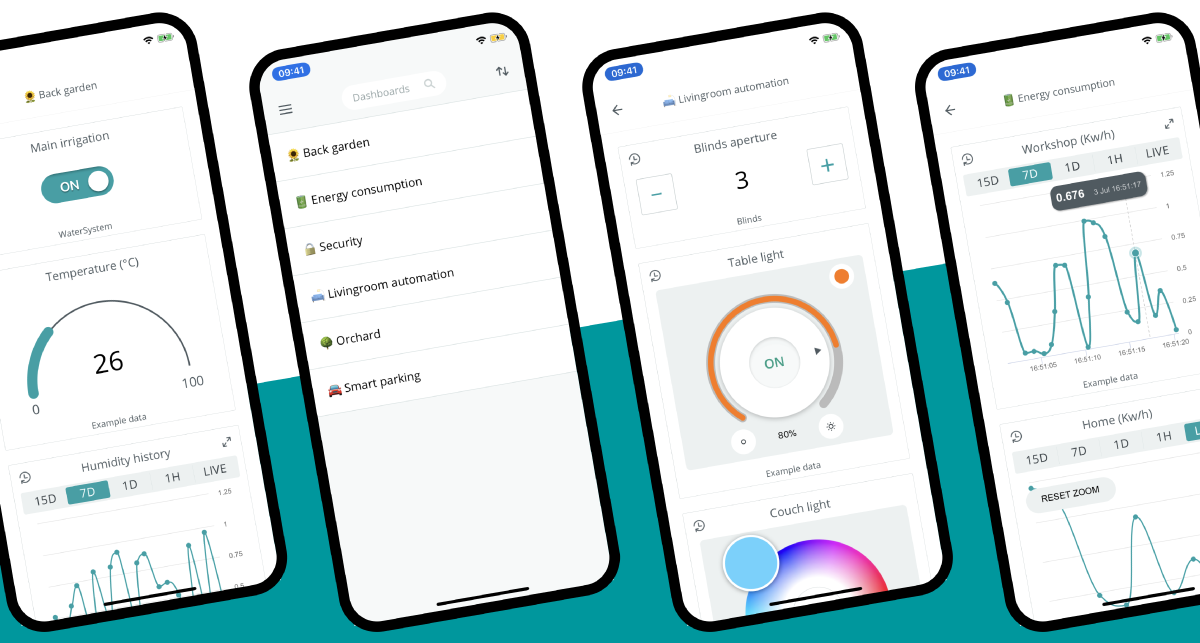Android: Setup IoT Remote SSH Without Root!
Are you tired of being tethered to your smart home, wishing you could tweak settings or troubleshoot issues while you're away? The ability to remotely access and control your Internet of Things (IoT) devices via SSH (Secure Shell) on your Android device, without the need for rooting, is not just a convenience, but a powerful tool that puts you firmly in the driver's seat.
The modern landscape of smart homes and connected devices presents both exciting opportunities and significant challenges. As the number of IoT devices in our lives grows exponentially, the ability to manage them securely and conveniently becomes paramount. This article delves into the specifics of establishing a secure remote connection to your IoT devices from your Android device without requiring root access, offering you a practical guide to take control of your connected world.
This approach, leveraging the power of SSH, grants you secure access, allowing you to monitor, control, and troubleshoot your devices from virtually anywhere in the world. The process involves setting up your IoT device to accept SSH connections, selecting an appropriate SSH client for your Android device, and configuring your network for secure and reliable communication. While it may sound complex, this guide breaks down the process into manageable steps, ensuring that both tech enthusiasts and those simply seeking to simplify their smart home setup can successfully implement this powerful functionality.
- 7 Little Johnstons Anna Family Drama Rift
- Alice Rosenblum Exclusive Content Leaks What You Need To Know
Before we delve into the specifics, it's crucial to understand the core concept: IoT remote SSH connection on Android without root refers to the process of securely accessing and controlling your IoT devices from your Android device using the SSH protocol. The beauty of this lies in its security; SSH provides a cryptographic network protocol, which encrypts the communication between your device and the IoT device, safeguarding your data and commands from prying eyes. Furthermore, the fact that you dont need to root your Android device makes this method accessible to a wider audience, eliminating the potential risks and complications associated with rooting.
Consider this a journey into the practical application of security and convenience, transforming your Android device into a central hub for your connected world. Remote SSH connections open doors to a new level of control, from basic monitoring to advanced configurations, all accessible from the palm of your hand. This empowers you to manage your devices securely, regardless of your physical location, adding a significant layer of flexibility to your daily life. From the ease of setting up to the increased control it provides, this is a game-changer for anyone involved with smart home technology or IoT devices.
So, how does this all work? Essentially, you're creating a secure tunnel through which you can access and control your IoT devices. The first step involves ensuring that your IoT server is configured to accept SSH connections. This could involve enabling SSH on your device and creating user accounts with appropriate permissions. Next, you'll need to install an SSH client on your Android device. Numerous free and paid SSH client apps are available on the Google Play Store. These apps provide the interface you will use to connect to and manage your devices.
- Inside Latest On Alice Rosenblum News Leaks Updates
- Aditya Roy Kapurs Parents Family Secrets Facts Revealed
The subsequent step involves configuring your network to allow SSH connections. This may involve setting up port forwarding on your router to direct external SSH traffic to your IoT device. Once these prerequisites are met, you'll be able to connect to your IoT devices from your Android device. This gives you the power to modify configurations, send commands, and even troubleshoot issues without physical access to the device. The process gives you secure access, allowing you to monitor, control, and troubleshoot your devices from virtually anywhere in the world.
This process enables you to manage and control your IoT devices securely, even when you're miles away. Youll learn about the prerequisites, such as setting up your IoT device for SSH access, choosing the right SSH client for Android, and configuring your network for secure and reliable communication. It covers all the steps you need to take to master remote access of your IoT device. The good news is that you don't need to root your Android device.
Here's a breakdown of what we will explore:
- Prerequisites: The core requirements to enable SSH on your IoT device, ensuring it's ready to accept connections.
- Android SSH Clients: Discovering and comparing the best free and paid SSH client apps for Android, with features, usability, and security in mind.
- Network Configuration: Setting up your network for secure access, including port forwarding, and considerations for various network setups.
- Establishing the Connection: The step-by-step process of connecting to your IoT device using your Android device, ensuring a secure and reliable connection.
- Security Best Practices: Important tips to secure your SSH connection, including strong password management, and enabling two-factor authentication.
- Troubleshooting Common Issues: Solutions to common issues that you might encounter while setting up or using remote SSH connections.
Setting up an IoT remote SSH connection on Android without root involves two main steps: configuring your IoT device for SSH access and installing and configuring an SSH client on your Android device. Throughout this guide, we'll explore various methods and tools that enable you to set up IoT remote SSH on your Android device for free.
In today's interconnected world, managing IoT devices remotely has become a necessity. Whether youre a tech enthusiast, a developer, or just someone looking to simplify IoT management, this guide will walk you through everything you need to know about SSH and IoT. This solution has got your back. IoT remote SSH connection is a perfect way to securely monitor and manage IoT devices remotely. From downloading the right apps to configuring SSH settings, this article will cover all the steps you need to take to master remote access IoT device SSH android.
The first and arguably most important step is to ensure your IoT server, or device, is configured to accept SSH connections. This typically involves enabling SSH on the device and configuring user accounts with appropriate permissions. You'll need to ensure that SSH is installed and running. This is often straightforward, with many IoT devices providing built-in SSH capabilities. Once SSH is enabled, youll want to create a user account specifically for SSH access. This account should have a strong password to protect your connection from unauthorized access.
The next phase involves selecting an SSH client for your Android device. There are many SSH clients available on the Google Play Store, with features varying between them. Choose one that is user-friendly, supports the features you need (such as key-based authentication), and offers good security practices. Some popular choices include JuiceSSH and ConnectBot. These apps provide the interface you'll use to connect to your IoT devices.
Once the SSH client is installed, you'll need to configure your network. This often involves setting up port forwarding on your router. Port forwarding directs external traffic from your public IP address to the internal IP address of your IoT device. In most cases, you'll want to forward port 22 (the standard SSH port). Ensure that your router's firewall is configured to allow SSH traffic on this port. You may also need to set a static IP address for your IoT device on your local network to ensure that the port forwarding always points to the correct device.
When configuring the SSH client, you will enter the IP address or hostname of your IoT device, your username, and your password. After successful authentication, you will gain access to a command-line interface, allowing you to execute commands on your IoT device remotely. You should configure your SSH client to save your connection details, so that you can quickly connect to your devices in the future. With the appropriate setup, you can connect to your IoT devices from virtually anywhere in the world.
For secure remote access, proper security practices are crucial. Use strong, unique passwords for your SSH user accounts. Consider enabling two-factor authentication (2FA) for your SSH connections if supported by your IoT device or SSH client. This adds an extra layer of security by requiring a second form of verification. Always keep your SSH client updated to patch any security vulnerabilities. Regularly review your SSH configuration and access logs to ensure no unauthorized access has taken place. You should also enable a firewall on your IoT device to restrict unauthorized traffic.
Should you run into issues, troubleshooting steps can help. If you cannot connect, check your internet connection and ensure your IoT device is online and accessible. Double-check the IP address, username, and password to eliminate any typos. Verify your port forwarding setup on your router. Check your device's firewall settings, which might block SSH connections. If the problem persists, consult the documentation of your SSH client and IoT device for specific troubleshooting steps.
By following these guidelines, you can establish a secure and reliable remote SSH connection to your IoT devices from your Android device, without root access. This empowers you to manage your IoT devices securely, even when you're miles away. From downloading the right apps to configuring SSH settings, this article has covered all the steps you need to take to master remote access of your IoT device. The good news is that you don't need to root your Android device.
Article Recommendations
- Charlie Austin Cryer Unveiling The Son Of Jon Cryer Sarah Trigger
- Camilla Araujo Latest News Updates You Need To Know



Detail Author:
- Name : Bradford Lubowitz
- Username : igoodwin
- Email : fdooley@klein.com
- Birthdate : 1978-08-19
- Address : 28951 Marquardt Locks Angelineberg, NV 93287
- Phone : (213) 323-5175
- Company : Ward-Ortiz
- Job : Protective Service Worker
- Bio : Rerum dolorum consequatur voluptatibus similique. Sit qui omnis et iste natus molestiae atque. Iste quasi blanditiis mollitia hic doloremque labore.
Socials
facebook:
- url : https://facebook.com/gerlach2018
- username : gerlach2018
- bio : Ducimus consectetur eaque aut sint ut repellendus.
- followers : 2201
- following : 445
instagram:
- url : https://instagram.com/devyn_gerlach
- username : devyn_gerlach
- bio : Nobis non ipsam et et. Quidem laboriosam qui ducimus doloribus illum eum. Ut in qui quis eos.
- followers : 4292
- following : 2562
twitter:
- url : https://twitter.com/devyn_official
- username : devyn_official
- bio : Fugit reiciendis iure et deleniti sint. Commodi ducimus et aliquam iste id. Delectus unde illo sed similique.
- followers : 6386
- following : 2661
tiktok:
- url : https://tiktok.com/@devyn7142
- username : devyn7142
- bio : Et placeat quisquam velit esse velit ipsam.
- followers : 5215
- following : 2133
linkedin:
- url : https://linkedin.com/in/devyn1289
- username : devyn1289
- bio : Mollitia quis maiores ea dolores esse iusto qui.
- followers : 4121
- following : 1064